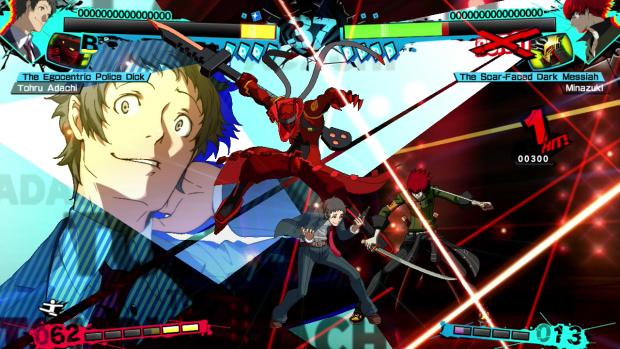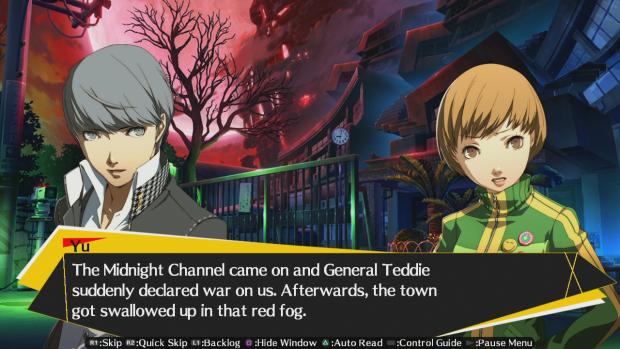Persona 4 Arena Ultimax Review
Any other developer would call it a sequel. As with the latest edition of BlazBlue, subtitled Chrono Phantasma, Persona 4 Arena Ultimax is an iteration that does far more than one would expect an iteration to do. While Ultimax appears, in name and in screenshots, to be a basic fighting game update of its predecessor, it doesn’t take a lot of playing to realise that Persona 4 Arena Ultimax is actually much closer to full blown follow up that a championship edition.
And that’s simply because it’s packed full of new modes, extra ideas and huge additions. It’s also because the story is a direct follow-up, too. This isn’t just a balance tweaked Persona 4 Arena with one or two new characters. This is a huge update, and one that makes remarkable improvements to an already superb fighting game.
At a basic level Arc System Works have added 9 new characters, almost doubling Persona 4 Arena’s total. Then there’s the new story mode alongside an RPG-like twist on survival in Golden Arena, plus Auto and Safety difficulties in various modes that, when combined with Persona 4 Arena’s ‘Auto Combo’, ensure that even the most timid of Atlus RPG fans can enjoy the spectacular rave combo combat that Arc System Works specialises in.

Put the magnifying glass a little closer and you’ll note that existing combatants all have new moves, new properties, and new animations. In some instances these tweaks make the characters simply more viable (Yu can now effectively pressure a Kanji player with a new command grab) and some simply more interesting (Yosuke has a hint of the Sadira’s about his new mix-up game).
Most characters also have a new Shadow version, too, which alters specifics in regards to how they can use special meter and what some universal techniques, such as bursts, actually do. This gives you a slight bit of style choice when picking your favourite character, as well as more to think about when presented with an opponent. Every fighter here is more developed than they were in Persona 4 Arena.
For those of you that don’t know know what Persona 4 Arena actually is, it’s a merger of a few things: the style, narrative and characters of Atlus’ contemporary JRPG series, Persona, and the intricate, combo based 2D fighting ‘air dash’ designs of Arc System Works, the studio responsible for both the BlazBlue and Guilty Gear series’.

The series was a corker from its first outing, because Arc System Works make tremendous fighting games. Their titles are rammed full of systems, often with obtuse names, that embellish combat every step of the way, making for combat dialogue that constantly feels fresh and rewarding to play. These are fighting games that punish overly defensive play, that build mind games into combo strings with the combo breaking ‘burst’, that give characters very specific mechanics and tools to ensure every different combination of characters has a plethora of interesting wrinkles to it. It’s no surprise that other fighting game developers are following in Arc’s footsteps, because they make stellar fisticuffs games.
Persona 4 Arena separates itself from the pack by playing on the Persona franchise’s main draw, the titular Personas. This is a four button fighter, but the catch is that two buttons control your character, and the other two are associated with their shadowy guardian (their Persona), and working out how to effectively combine both your character and Persona’s attacks in combat is a wholly unique combat style. Other games have dabbled in Puppet and Staff styles (JoJo’s Bizarre Adventure and BlazBlue, notably), but none embrace it as fully as Persona 4 Arena. This alone makes it a very exciting, often intoxicating game to play and watch, even if it can be somewhat initially bewildering.

But what if you’re a JRPG fan? Well, while Persona 4 Arena Ultimax certainly does a lot to improve the experience for fight fans, Persona’s JRPG slanted admirers have not been forgotten. Quite the opposite, I’d say that Persona 4 Arena Ultimax is more accommodating than ever.
The auto combo returns (hammer light punch and your character will input a basic, but effective, combo string that links all the way up to a super move should you have the meter), but alongside that are easier difficulties and even an ‘auto’ option in story that sees the CPU play out the scraps for you, should you just be in the mood to read the story and watch the pretty cutscenes.
The Golden Arena feels tailored to RPG players, too. Essentially a series of survival matches that saves after every fifth floor, your character levels up as you play, and builds a bond with their supporting character. Every time you level up you can spend skill points to improve stats, and you also unlock abilities of which you can have four active to embellish play. It’s a great addition and probably the best way for a non-fighting game fan to get a lot of game from Persona 4 Arena Ultimax. The harder courses will appeal to fighting game fans, too.

Aside from that, it’s as expected. Usual arcade and time attack modes alongside a list of nigh-impossible skill challenges for every character alongside Arc System Works’ solid online integration. It’s all icing around the superb combat, really, but it’s reassuring to know the usual content spread is present and correct.
It’s the style that shines through, though. I said it when Persona 4 Arena came out and it stands true for Ultimax; Persona 4 Arena is the most stylish fighting game ever, and a gem of the genre to boot, thanks to its combination of appealing and genuinly cool aesthetics with ocean deep gameplay. The only thing that’s changed with Ultimax is that it’s better than ever. Lots better, actually. Sequel degrees of better, even if Arc System Works won’t shout about it.

SUPERB. This is the mark of greatness, only awarded to games that engage us from start to finish. Titles that score 9/10 will have very few problems or negative issues, and will deliver high quality and value for money across all aspects of their design.
Review code provided by publisher.




